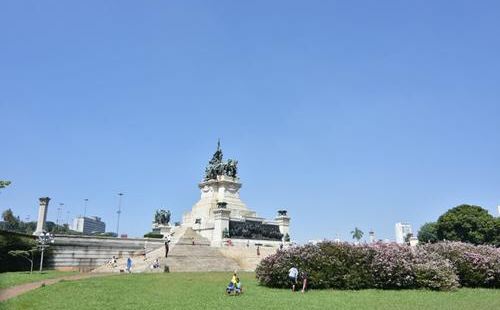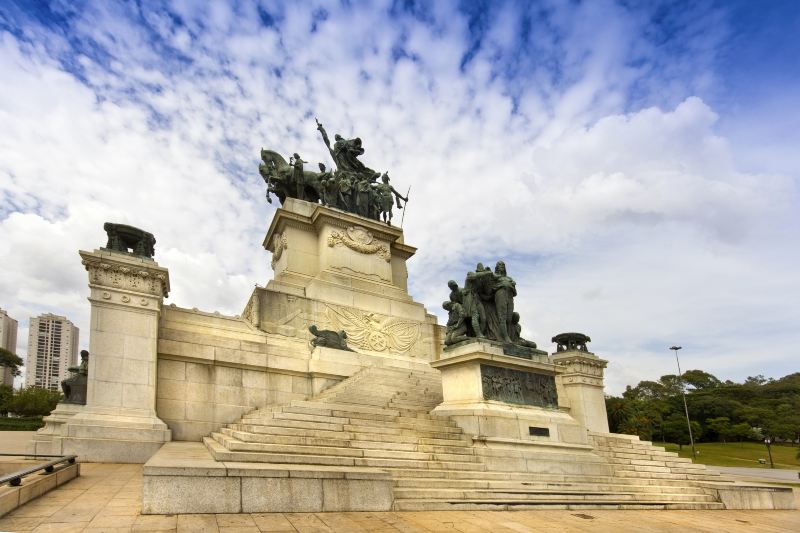
4/5
纪念巴西独立的一个很重要的纪念碑,整个构造很巨大的,顶部是一些人物的雕刻,很细微的那种,也是巴西圣保罗最大的一个广场。这里的位置也是核心的地带。 小思文
小思文0



This monument is about tens of meters high, towering and majestic. This monument uses a more intuitive, more oppressive, more masculine symbolic language to commemorate the heavy and interpret the persistence and pursuit of freedom in this hot land. After visiting the monument, you can stop by the park and the Palace Museum on the square. 1. Establishment Background From the moment of Brazil's independence in 1822, it was planned to build a monument in Sao Paulo as a symbol of "independence and justice". Unfortunately, due to limited financial resources at the time, the plan was repeatedly shelved, and it was not established until 1922 (when the palace and the gardens in front were already completed), a full 100 years after the independence of Brazil. However, a century has not weakened the strength and spirit of the monument. 2. Monument shape The base of the monument is a huge heart-shaped shape. The steps are gradually decreasing. As you go up, a male tension blows. At the top of the monument is a group of figures, showing the scene of Pedro I marching towards Rio de Janeiro. Their expressions are solemn and imposing. On the front of the marble pedestal is a group of large bronze reliefs, depicting the situation in which Pedro I proclaimed Brazil's independence from Portuguese rule. If you taste it carefully, you can feel the joy and pride brought by the body shape of the characters here. There are also portraits of independent groups around the pedestal, and these reliefs can be admired from the monument while standing under the monument. The basement of the monument houses the coffins of King Pedro and Queen Pedro. The sacred flame of the monument is not extinguished all year round, echoing the Brazilian flag fluttering in the wind, which is thought-provoking. 3. The meaning of the monument The base of the monument is in the shape of a heart, and the monument itself means a huge sword, directly inserted into the heart of St. Paul. As a result, people can feel the pain of too much slavery in Brazil from this group of sculptures. The blazing fire in front of the monument is still burning. It not only symbolizes the passionate and energetic nature of the Brazilians, but also represents the Brazilian people's endless yearning for independence, democracy and freedom.